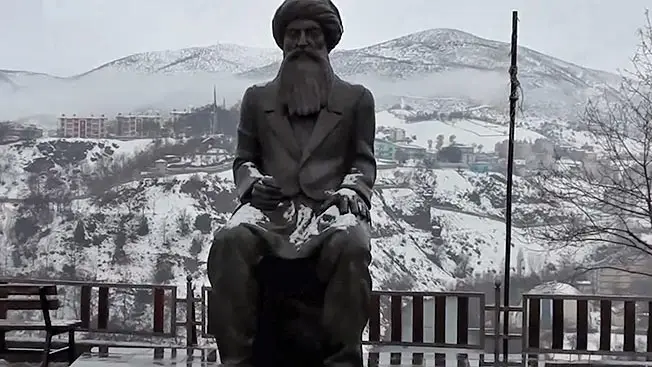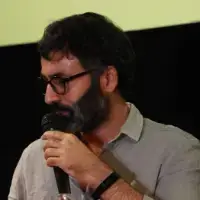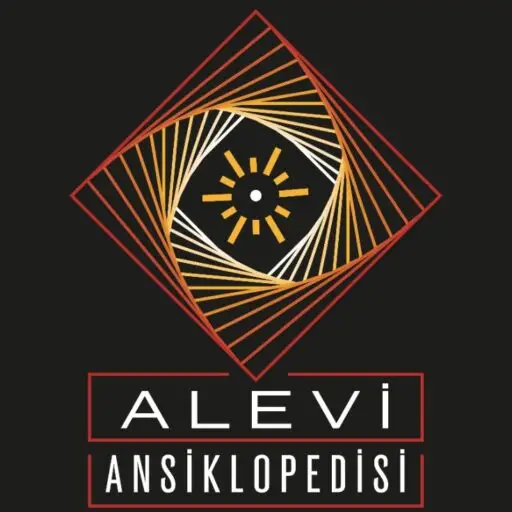Seyit Rıza Monument (Dersim)
* This entry was originally written in Turkish.
The Seyit Rıza Monument is a significant site of memory that renders visible, both symbolically and spatially, the place of the 1937–38 Dersim Massacre within Alevi–Kurdish collective memory. Located in the city center of Tunceli, the monument publicly embodies the Alevi values of rıza (consent), justice, and defiance through the personality of the executed resistance leader Seyit Rıza. Viewed through the theoretical lenses of Pierre Nora’s concept of “lieux de mémoire” (sites of memory), Jan Assmann’s “cultural memory,” and Michel Foucault’s notion of “counter-memory,” the monument is not merely a commemorative structure but also a space for the acknowledgment of historical trauma, the construction of alternative historiographies, and the pursuit of social repair. Through annual commemoration ceremonies, it sustains collective memory and, for the diaspora, has become a focal point where belonging is continually rearticulated. As a practice of remembrance that stands against official historical narratives, the Seyit Rıza Monument serves as a tangible symbol of both political resistance and the continuity of memory.Historical Background and the Geography of Memory
The geography of Dersim holds a distinctive place in the collective memory of Alevi communities in terms of belief, history, and politics. This memory is shaped not only by sacred sites but also by traumatic experiences woven through massacres, exiles, and acts of resistance. The 1937-38 Dersim Massacre occupies a central position in Alevi-Kurdish memory not merely as an episode of physical destruction but as an attempt to disrupt the continuity of spatial and cultural memory. In this context, the Seyit Rıza Monument, erected in Dersim, bears exceptional significance as both a commemoration of a historical figure and a reconstruction of social memory within the public sphere.
Executed in 1937 at Buğday Square in Elazığ, Seyit Rıza stands as one of the emblematic figures of the Dersim resistance and occupies a profound place in the historical memory of both Alevi and Kurdish collective identities. Although branded by the early Republican regime as a “bandit” or “rebel,” he is remembered among Alevi and Kurdish communities as the embodiment of values such as rıza (consent), justice, dignity, and spiritual devotion. The fact that the location of his grave was never disclosed to his family and that his remains were deliberately hidden reveals an attempt to erase this figure not only physically but also symbolically. For this reason, the Seyit Rıza Monument represents not merely an individual but the material embodiment of a collective identity and memory.
The Monument
The monument was erected in the 2000s as a result of the growing politics of memory in Dersim. For decades, the name of Seyit Rıza had remained a political taboo in Turkey, and any public commemoration of him was prohibited. Beginning in the 2000s, however, rising demands for recognition, new memory politics, and the strengthening of the Alevi movement brought his name back into public visibility through various symbols. In 2010, the Municipality of Dersim (then governed by the Peace and Democracy Party, BDP) erected a statue of Seyit Rıza in Seyit Rıza Square. This monument represents a historic turning point, as it marks the first time in modern Turkish history that an Alevi-Kurdish leader was officially honored with a public statue.
Situated in the city center, the statue in Seyit Rıza Square constitutes a visual and spatial manifestation of an effort to build an alternative memory against the state’s official historical narrative. The pedestal bears the words Seyit Rıza spoke on his way to execution: “Evlad-ı Kerbelayık, bi hatayık. Ayıptır, zulümdür, cinayettir” (“We are the children of Karbala, we are innocent. It is a disgrace, an injustice, a crime”). This statement resonates with the Karbala mourning narrative central to Alevi theology and functions as a symbol of ethical resistance against state violence.
Site of Memory; Counter-Memory; Cultural Memory
The meaning of such monuments should be understood through Pierre Nora’s concept of lieux de mémoire (sites of memory). According to Nora, in modern societies, memory is no longer transmitted organically but is instead reproduced through material, symbolic, and ritual spaces (Nora 2006). In this sense, the Seyit Rıza Monument represents a collective intervention aimed at remembering the lost, bringing suppressed narratives into the public sphere, and acknowledging historical trauma.
The monument can also be interpreted through Michel Foucault’s concept of counter-memory. Foucault’s theory of contre-mémoire focuses on reviving the repressed, forgotten, or marginalized historical experiences and identities that stand in opposition to dominant and official narratives of social memory. For Foucault, knowledge and discourse produced by power structures shape and regulate collective memory. Counter-memory challenges these hegemonic discourses, seeking to make visible the voices and experiences excluded or silenced by power. As an example of counter-memory, the Seyit Rıza Monument reintroduces suppressed histories into the spatial and symbolic sphere, opposing dominant historiography. It stands as a point of resistance through which Alevi-Kurdish communities construct their alternative historical memories in the face of denialist politics. In this regard, the monument not only recalls the past but also offers a space for political action in the present.
Such sites of memory can also be explained through Jan Assmann’s concept of cultural memory. According to Assmann, cultural memory is a long-term form of remembrance that enables intergenerational transmission through written, oral, and ritual practices (Assmann 2018, 37). The annual commemorations held on 15 November in Dersim transform the Seyit Rıza Monument into a ritual site that keeps this memory alive. In Maurice Halbwachs’ (2016) terms, sites of commemoration create “social frameworks” that enable individuals to connect with the past. The Seyit Rıza Monument functions as such a framework, materializing collective memory within space.
The notion of radical memory is also illuminating in this context. As Andreas Huyssen emphasizes, radical memory does not merely recall the past; it politicizes remembrance as a means to confront the present and to transform the future. The Seyit Rıza Monument fulfills precisely this role, existing as a “space of mnemonic resistance” against the politics of forgetting.
This monument has become not only a site of remembrance for the inhabitants of Dersim but also a locus of rootedness and belonging for the Dersim diaspora in Turkey’s major cities and across Europe. Commemorations, symbolic representations, and digital archiving practices in the diaspora demonstrate that the monument has evolved into a focal point of a transnational collective memory. This reveals that memory is constructed not solely within a single space but also through interspatial and translocal relationships.
Conclusion
In conclusion, the Seyit Rıza Monument represents far more than the commemoration of a historical figure. It constitutes a space of counter-memory situated at the intersection of the spatial, political, and aesthetic dimensions of Alevi-Kurdish collective remembrance. Offering an alternative mode of remembering in opposition to the state’s historical politics of denial, the monument also symbolizes the visibility and legitimacy of Alevi memory within the public sphere. Viewed through Pierre Nora’s concept of lieux de mémoire (sites of memory), the Seyit Rıza Monument stands as a powerful symbol that brings Dersim’s traumatic past into public consciousness. For the Alevi community, it is at once a call for justice, a demand for confrontation with history, and a spatial assertion of presence in a geography where even the dead have been made to disappear.
Assmann, Jan. 2018. Kültürel Bellek: Eski Yüksek Kültürlerde Kimlik, Hafıza ve Yazı. İstanbul: Ayrıntı Yayınları.
Halbwachs, Maurice. 2016. Hafızanın Toplumsal Çerçeveleri. Ankara: Heretik Yayınları.
Huyssen, Andreas. 2003. Present Pasts: Urban Palimpsests and the Politics of Memory. Stanford, CA: Stanford University Press.
Nora, Pierre. 2006. Hafıza Mekânları. Ankara: Dost Kitabevi.
Traverso, Enzo. 2012. Geçmişin Siyaseti: Tarih, Bellek, Totalitarizm. İstanbul: İletişim Yayınları.



